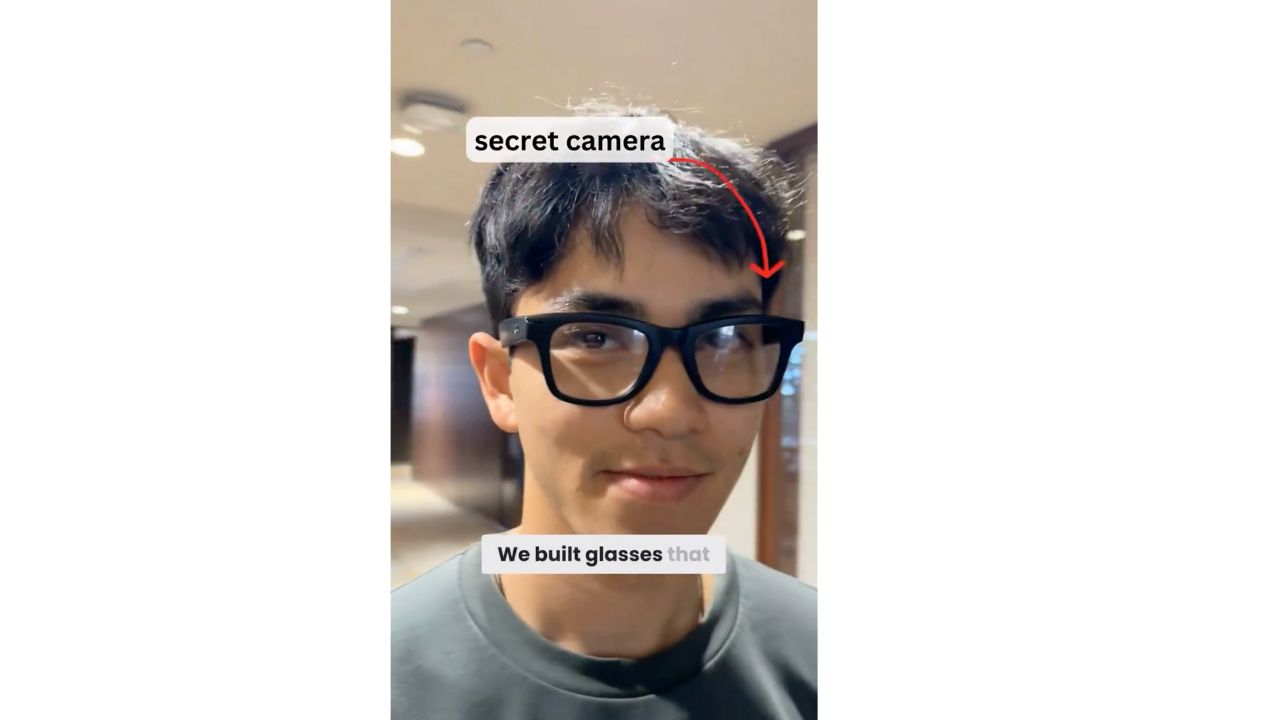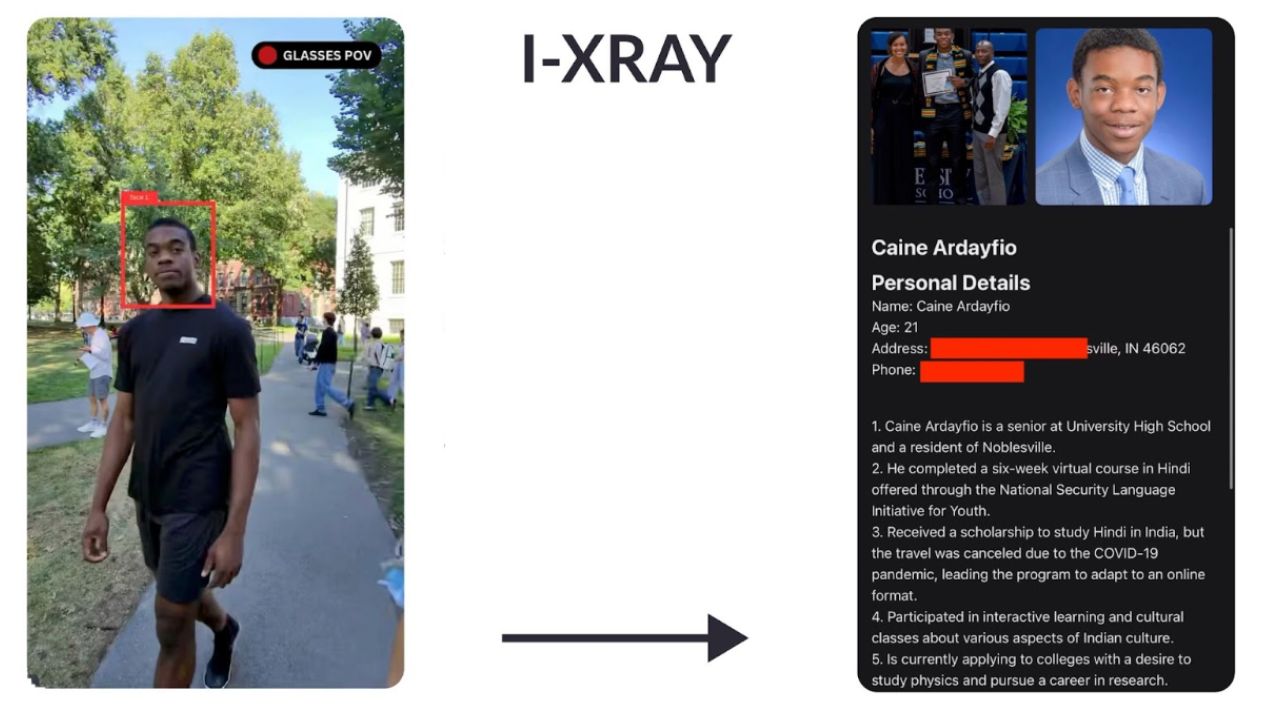In a scenario that feels almost surreal and scary, we find ourselves grappling with the implications of the latest Meta Ray-Ban 2 Smart Glasses. These innovative shades have quickly become the center of a privacy storm, raising important questions about how technology intersects with our personal lives.
As these smart glasses blur the lines between convenience and surveillance, we’re forced to confront a new reality where our privacy in public spaces may no longer be guaranteed. The ability to capture and process information about strangers in real time has sparked debates about consent, data protection, and the ethical use of wearable technology.
GET SECURITY ALERTS, EXPERT TIPS – SIGN UP FOR KURT’S NEWSLETTER – THE CYBERGUY REPORT HERE

Credit: AnhPhu Nguyen
Not your average shades: The Meta Ray-Ban 2 Smart Glasses
First things first, let’s talk about the gadget at the center of this privacy storm – the Meta Ray-Ban 2 Smart Glasses. These aren’t your average shades, folks. Launched as a collaboration between Meta (formerly Facebook) and the iconic eyewear brand Ray-Ban, these second-generation smart glasses seamlessly blend technology into our everyday lives.
Equipped with a camera, open-ear speakers, and a microphone, they allow wearers to capture photos, take calls, and even livestream to Instagram hands-free. Integrated AI features, such as voice commands powered by Meta’s assistant, further enhance usability, making these glasses an intuitive extension of your tech ecosystem.

Credit: AnhPhu Nguyen
HOW STORES ARE SPAYING ON YOU USING CREEPY FACIAL RECOGNITION TECHNOLOGY WITHOUT YOUR CONTENT
When innovation meets privacy concerns
Now, here’s where things get interesting (and a bit scary). Two Harvard students, AnhPhu Nguyen and Caine Ardayfio, have taken these seemingly innocuous smart glasses and turned them into a privacy nightmare. Nguyen and Ardayfio created a system called I-XRAY that can identify individuals on the street. The information their tool collects from just a photo of a person’s face is pretty mind-blowing.
To use it, the wearer simply puts on the glasses while walking by people. The glasses then detect when somebody’s face is in the frame. This photo is used to analyze the individual, and after a few seconds, their personal information appears on the user’s phone.
The developers explained how it works. They stream the video from the glasses straight to Instagram and have a computer program monitor the stream. They use AI to detect when the glasses are looking at someone’s face. Then they scour the internet to find more pictures of that person.
Finally, they use data sources like online articles and voter registration databases to determine the individual’s name, phone number, home address, and relatives’ names. All this information is fed back to an app they wrote for their phone. Using their glasses, the researchers claim they were able to identify dozens of people, including Harvard students, without the subjects ever knowing.

Credit: AnhPhu Nguyen
TSA FACIAL RECOGNITION FOR AIR TRAVEL SPARKS PRIVACY OUTRAGE
The good, the bad, and the scary
Now, before you start panicking, it’s important to note that Nguyen and Ardayfio created this system as a proof of concept. Their goal is to raise awareness about the potential privacy risks of combining existing technologies. Nguyen and Ardayfio had this to say,
Initially started as a side project, I-XRAY quickly highlighted significant privacy concerns. The purpose of building this tool is not for misuse, and we are not releasing it. Our goal is to demonstrate the current capabilities of smart glasses, face search engines, LLMs, and public databases, raising awareness that extracting someone’s home address and other personal details from just their face on the street is possible today.
The scary part? All the technologies used in I-XRAY are readily available. This means that while Nguyen and Ardayfio won’t be releasing their system, someone else could potentially create something similar.

Credit: AnhPhu Nguyen
POLICE ARE USING INVASIVE FACIAL RECOGNITION SOFTWARE TO PUT EVERY AMERICAN IN A PERPETUAL LINE-UP
Protecting your privacy in the age of AI
So, what can we do to protect ourselves? The researchers have provided some tips to erase yourself from data sources like Pimeyes and FastPeopleSearch, so this technology immediately becomes ineffective.
1) Removal from reverse face search engines
The major, most accurate reverse face search engines, Pimeyes and Facecheck ID, offer free services to remove yourself.
- Pimeyes
- Facecheck ID
HOW TO CRAFT A TAKEDOWN NOTICE AND GET YOUR MATERIAL REMOVED FROM OFFENDING WEBSITES
2) Invest in personal data removal services
While no service promises to remove all your data from the internet, having a removal service is great if you want to constantly monitor and automate the process of removing your information from hundreds of sites continuously over a longer period of time.
A service like Incogni can help you remove all this personal information from the internet. It has a very clean interface and will scan 195 websites for your information and remove it and keep it removed.
Special for CyberGuy Readers (60% off): Incogni offers A 30-day money-back guarantee and then charges a special CyberGuy discount only through the links in this article of $5.99/month for one person (billed annually) or $13.19/month for your family (up to 4 people) on their annual plan and get a fully automated data removal service, including recurring removal from 190+ data brokers. You can add up to 3 emails, 3 home addresses and 3 phone numbers (U.S. citizens only) and have them removed from data-broker databases. I recommend the family plan because it works out to only $4.12 per person per month for year-round coverage. It’s an excellent service, and I highly recommend at least trying it out to see what it’s all about.
Get Incogni here
Get Incogni for your family (up to 4 people) here
Kurt’s key takeaways
On the one hand, innovations like the Meta Ray-Ban 2 Smart Glasses offer exciting new ways to interact with the world around us. On the other hand, the I-XRAY project shows just how easily these technologies can be used to invade our privacy. The key takeaway? Stay informed, and be proactive about protecting your personal information. As we continue to push the boundaries of what’s possible, it’s crucial that we also have serious conversations about privacy and the kind of future we want to create.
So, what do you think? Are smart glasses the next big thing, or a privacy disaster waiting to happen? Let us know in the comments below.
Copyright 2024 CyberGuy.com. All rights reserved. CyberGuy.com articles and content may contain affiliate links that earn a commission when purchases are made.








![Here’s the Galaxy S25 Edge – two cameras, launching ‘around’ April [Gallery]](https://i0.wp.com/9to5google.com/wp-content/uploads/sites/4/2025/01/galaxy-s25-edge-8.jpg?resize=1200%2C628&quality=82&strip=all&ssl=1)










 English (US) ·
English (US) ·